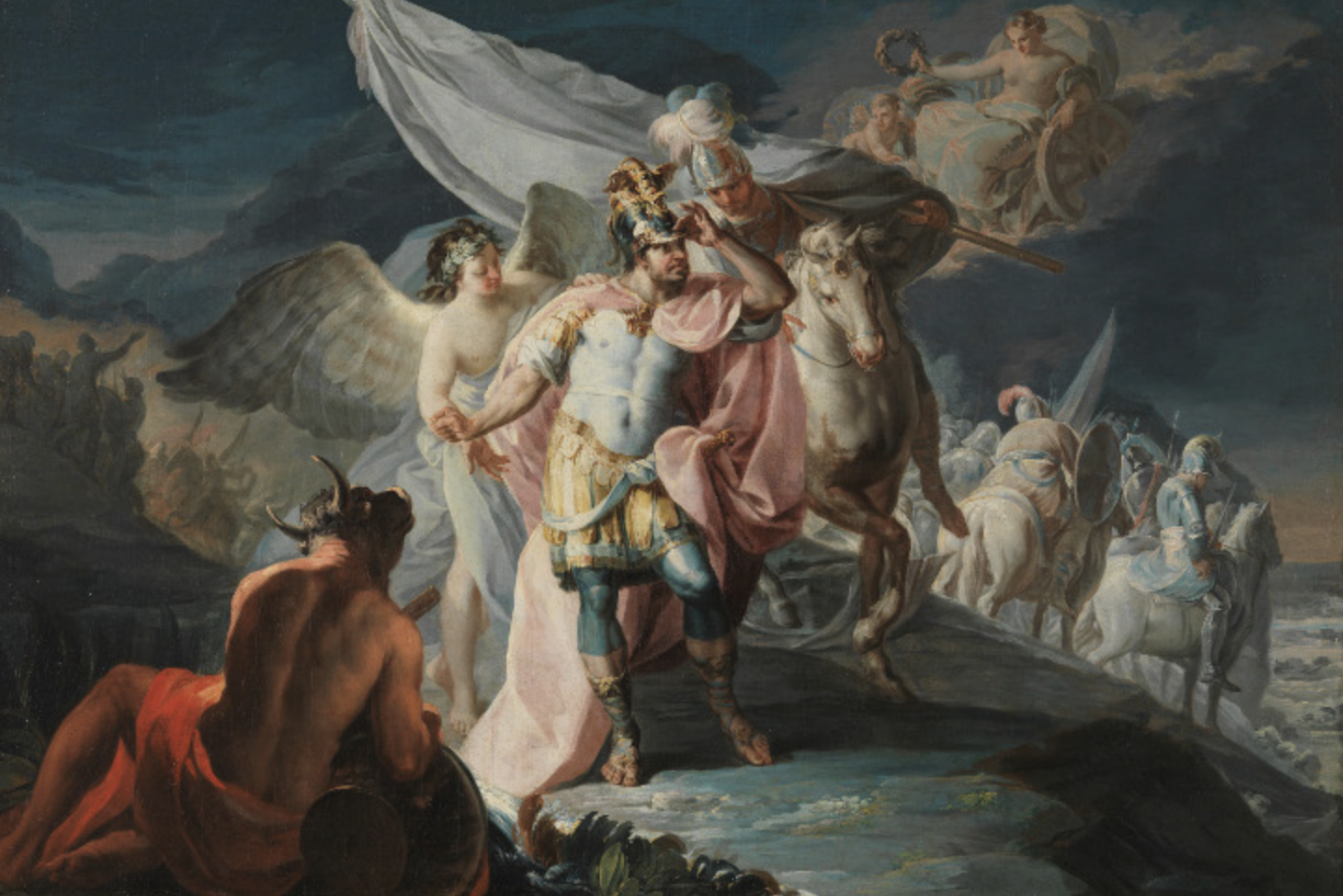
The permanent collection of Madrid’s Prado Museum now boasts the earliest documented work of Francisco Goya. The work, Aníbal vencedor que por primera vez mira a Italia desde los Alpes (Victorious Hannibal Who for the First Time Looks at Italy from the Alps), was acquired by the Friends of the Prado Foundation for €3.3 million (nearly $4 million). It was donated to the museum in commemoration of the 40th anniversary of the organization, which will be celebrated with an exhibition of every piece donated by the Foundation over its decades-long partnership with the Prado.
Dated 1771, the painting fills an important gap in the Prado’s chronological history of the 18th-century artist. It joins Italian Notebook, a sketchbook containing numerous notations, drawings, and musings by the artist, including rough sketches of what would become Hannibal. The painting depicts the Carthaginian general flanked by angels and a procession of soldiers. He would lead his armies across the Pyrenees and Alps into Italy, in one of the most legendary military campaigns in history.
Goya painted the scene during a two-year stay in Italy and later submitted it as his entry for a competition held by the prestigious Reale Accademia di Belle Arti de Parma. Though the top prize went to local painter Paolo Borroni, Goya’s work was singled out by the press for its excellence.
For scholars with a focus on the artist, it is an essential entry in his oeuvre. The work represents an important step in establishing himself as a career painter, and showed early on that he could allude to history, religion, and mythology in one canvas—something he would do again and again throughout his career.